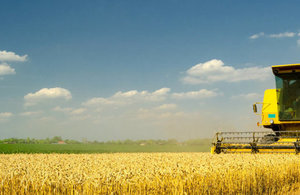CEN updates affecting chemical measurements July 2018
Standards published by the CEN from June to July 2018, some of which are relevant to chemical measurement in support of food and animal feed regulation

Standards related to fertilizer testing
Fertilizers
Regulation (EC) No 2003/2003 concerns fertilizers placed on the EU market and designated as an ‘EC fertilizer’. The Regulation states that the content of one or more of the micro-nutrients boron, cobalt, copper, iron, manganese, molybdenum, or zinc present in specified types of fertilizers shall be declared where certain conditions are fulfilled where sampling and analysis methods shall, wherever possible, use European Standards. Further amendments to the Regulation have been made and a consolidated version of the Regulation up to 2016 can be found here.
EN 17041:2018 Fertilizers - Determination of boron in concentrations ≤ 10 % using spectrometry with azomethine-H
EN 17041:2018 describes a spectrophotometric method for the determination of total and water extractable boron in mineral fertilizers by measuring the yellow coloured complex formed in solution by the reaction of boron with azomethine-H {4-hydroxy-5-[(6-oxocyclohexa-2,4-dien-1-ylidene)methylamino]naphthalene-2,7-disulfonic acid}. The method is suitable for concentrations of boron in mineral fertilizers equal to or less than 10%.
This spectrophotometric method requires more preparation, including the removal of organic matter from the extract which interferes with the colour, compared to other equivalent methods using more complex instruments such as inductively coupled plasma atomic emission spectroscopy (ICP-AES) but is considered as reliable and relatively inexpensive. EN 17041 is applicable to water and aqua regia fertilizer extracts obtained using EN 16962 and/or EN 16964 but it is not suitable where the iron concentration is twenty times greater than the boron concentration.
Although the method is only suitable for fertilizer extracts having a boron concentration of 10% or less, the method can be adapted for higher boron concentrations through quantitative dilutions of the extract to be within the specified 10% concentration range.
EN 17042:2018 Fertilizers - Determination of boron in concentrations > 10 % using acidimetric titration
EN 17042:2018 describes a method for the determination of boron in mineral fertilizers by acidimetric titration using sodium hydroxide to a specified pH end-point. The method is suitable for concentrations of boron in the mineral fertilizer in excess of 10%.
Soluble boron extracted from the fertilizer forms boric acid (a weak acid) in solution and can be titrated against a standardised molar solution of sodium hydroxide but only after adding D-mannitol to form a mannitoboric complex which enables titration to an end point of pH 6.3 corresponding to a known mass of boron.
EN 17042 is applicable to water and aqua regia fertiliser extracts obtained using EN 16962 and/or EN 16964.
EN 17043:2018 Fertilizers - Determination of molybdenum in concentrations ≤ 10 % using spectrometry of a complex with ammonium thiocyanate
EN 17043 describes a spectrophotometric method for the determination of total and water extractable molybdenum in mineral fertilizers by measuring the yellow/orange coloured molybdenum (V) thiocyanate complex [MoO(SCN)5] formed by the reaction of molybdenum and ammonium thiocyanate in acid solution. The method is suitable for concentrations of molybdenum in mineral fertilizers equal to or less than 10%.
This spectrophotometric method requires more preparation, including the removal of organic matter from the extract which interferes with the coloured complex, compared to other equivalent methods using more complex instruments such as inductively coupled plasma atomic emission spectroscopy (ICP-AES) but is considered as reliable and relatively inexpensive. EN 17043 is applicable to water and aqua regia fertilizer extracts obtained using EN 16962 and/or EN 16964.
Further information on food and feed legislation can be found on the Government Chemist website: